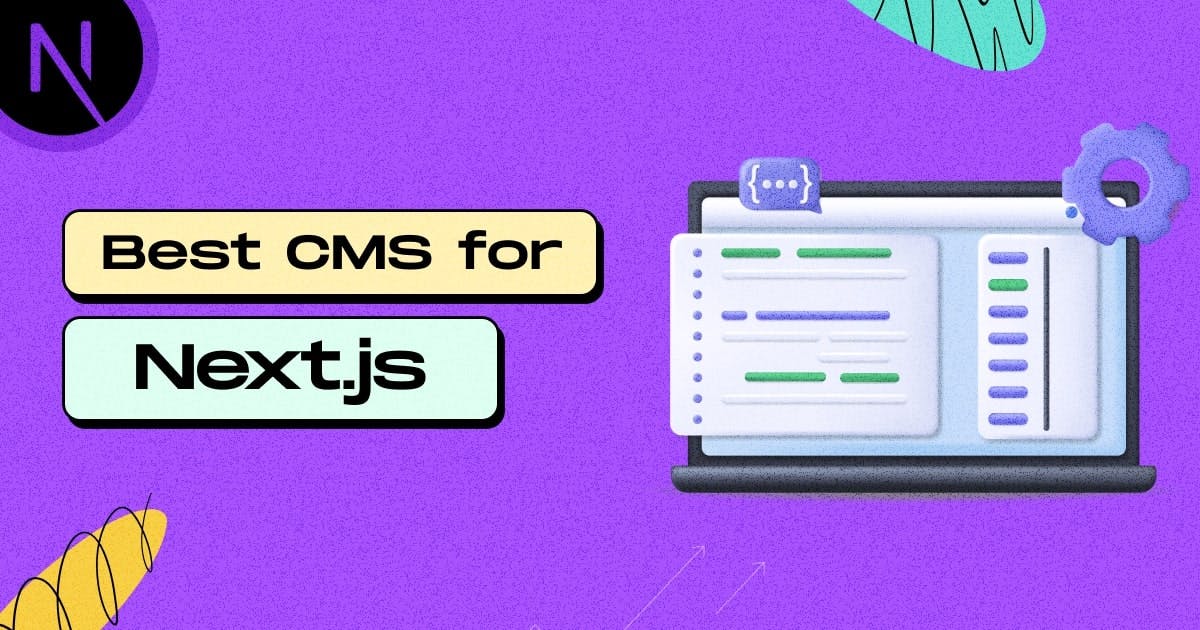
Best CMS for Next.js Web Framework
- Author: Nusrat Sarmin
- Published at: August 28, 2023
- Updated at: April 21, 2024
When it comes to leveraging the full potential of your Next.js application, the turning decision lies in selecting the perfect Content Management System (CMS). A good headless CMS offers the flexibility, efficiency, and scalability required to create modern, content-rich digital experiences.
However, choosing the best headless CMS for your Next.js project in 2023 can be a difficult task. There are many different options, and comparing them all can be overwhelming.
Here is a short list of the best Next.js CMS available in 2023. The headless CMS options are selected based on their features, ease of use, advantages, cost-effectiveness, and support. So, this quick guide can help you make the best decision when choosing a CMS for your Next.js project.
How to Choose the Best Headless CMS for Next.js?
It is essential to consider the project requirements and goals when choosing the best Next.js CMS. Here are some steps and considerations to keep in mind when making an informed decision:
👉 Know what your project needs:
✪ Define your project's content needs and the type of content you'll manage (e.g., blog posts, product data, images, videos).
✪ Consider whether your content will be multilingual or need localization support.
✪Determine the number of content editors and their technical expertise.
👉 API Compatibility:
✪ Ensure the headless CMS has a solid API that can seamlessly integrate with Next.js.
👉 Developer Experience (DX):
✪ Check if the CMS has SDKs or client libraries for JavaScript or React to make integration with Next.js easier.
✪ Look for clear and up-to-date documentation.
👉 Performance:
✪ Evaluating the CMS's response times and server-side rendering capabilities is important to ensure efficient content delivery for modern web applications.
👉 Customization and Ease of Use:
✪ Ensure the CMS allows you to structure your content in a way that fits your specific needs.
✪ Some CMSs might have rigid data structures that don't align with your project's requirements.
✪ Choose a CMS that supports custom data models
👉 Content Editing Experience:
✪ Sign in for a demo or trial of the CMS to evaluate the content editing interface.
✪ The CMS should provide an intuitive and user-friendly content editing experience for non-technical users.
👉 Security:
✪ Security is paramount when dealing with user-generated content and sensitive data. Ensure the CMS follows best practices for security and data protection.
👉 Scalability:
✪ Consider the CMS's ability to handle growing amounts of content and traffic without compromising performance. Make sure the CMS you choose is able to handle both large and small projects as your project grows.
👉 Community and Support:
✪ Check if the CMS has an active community, forums, or support channels where you can seek help if needed.
👉 Cost and Budget:
✪ Determine your budget and evaluate the cost of the CMS, considering any additional charges for API usage, storage, or extra features. Compare pricing plans to make sure you are getting the best value for your money.
👉 Integration with Next.js:
✪ Some CMSs have specific plugins or extensions for Next.js, making the integration process smoother.
👉 Previous Experience and Recommendations:
✪ Look for reviews and recommendations from developers who have used the CMS for similar projects.
👉 Check customer support:
✪ Make sure the CMS provider offers reliable customer service so you can get help when needed.
Ultimately, choosing the best headless CMS for Next.js depends on finding the right balance between features, ease of integration, developer experience, and budget constraints.
Popular Headless CMS options that are known to work well with Next.js include:
1. Sanity CMS
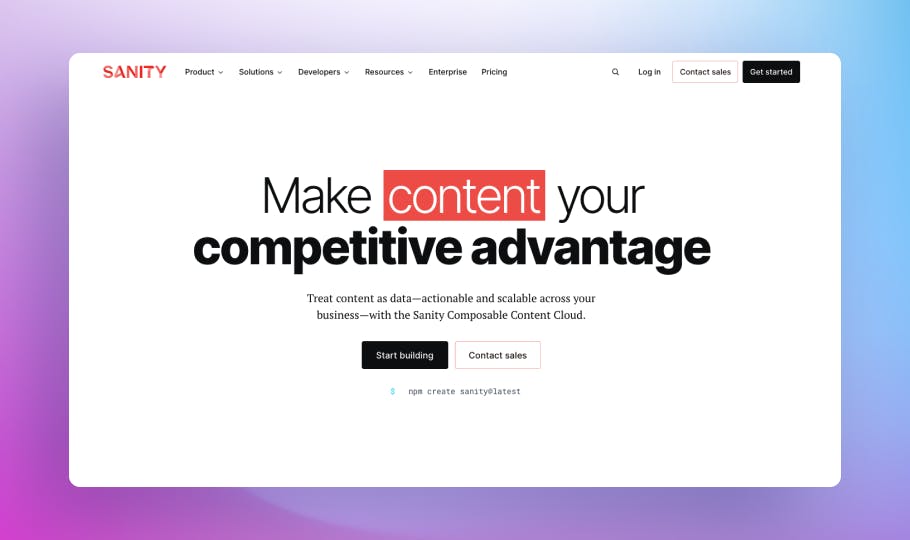
Sanity is an open-source content platform and next-gen headless CMS. It offers a powerful set of tools to manage content for any type of digital experience.
Sanity is built on the concept of structured content. It allows developers to create their own custom data schemas and structures. Moreover, it can be integrated into any application and is incredibly versatile.
All these advantages make Sanity one of the best Next.js in 2023. Sanity can make it easy to create fast, personalized experiences for customers and users when combined with Next .js.
| Pros | Cons |
|---|---|
|
|
2. Suncel.io

Suncel is a powerful and innovative content management system (CMS) designed specifically for Next.js applications. With its unique combination of features, Suncel provides developers with a powerful platform to create dynamic, modern web apps and websites quickly and easily.
The key feature that sets Suncel apart from other CMS solutions is its built-in support for server-side rendering of React components. This allows developers to quickly create personalized user experiences without the need for an entire backend stack.
Overall, Suncel is a great choice for Next.js projects in 2023 due to its comprehensive feature set. Its easy integration with the Next.js framework established its as the best next.js CMS.
| Pros | Cons |
|---|---|
|
|
3. Prismic

Prismic CMS offers a modern and user-friendly approach to content management. It can be used with Next.js. Both Prismic and Next.js follow an API-first approach.
Prismic provides a well-documented RESTful API and GraphQL API, which can seamlessly integrate with Next.js applications.
Prismic CMS offers a feature-rich content management solution that complements the capabilities of Next.js. Its API-first approach, structured content model, and integration possibilities make it an ideal choice for building dynamic, high-performance, and SEO-friendly Next.js applications.
| Pros | Cons |
|---|---|
|
|
4. Strapi
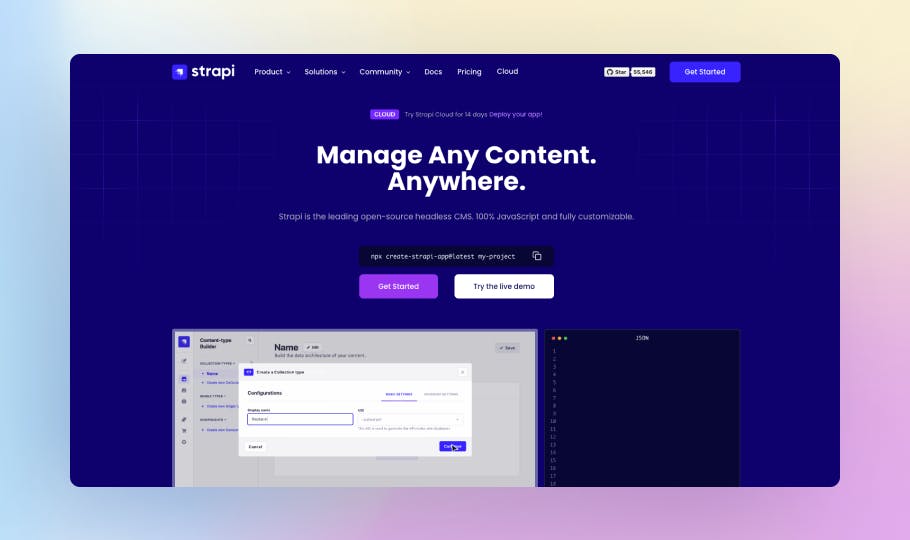
Strapi is an open-source headless CMS that is quickly becoming one of the most popular choices for Next.js projects. Its robust APIs allow developers to customize their websites with ease.
Strapi's architecture aligns well with Next.js, as it empowers you to design and control the frontend experience using Next.js while relying on Strapi for content management.
For developers looking to quickly build a CMS-powered website, Strapi can be a powerful tool.
| Pros | Cons |
|---|---|
|
|
5. Ghost
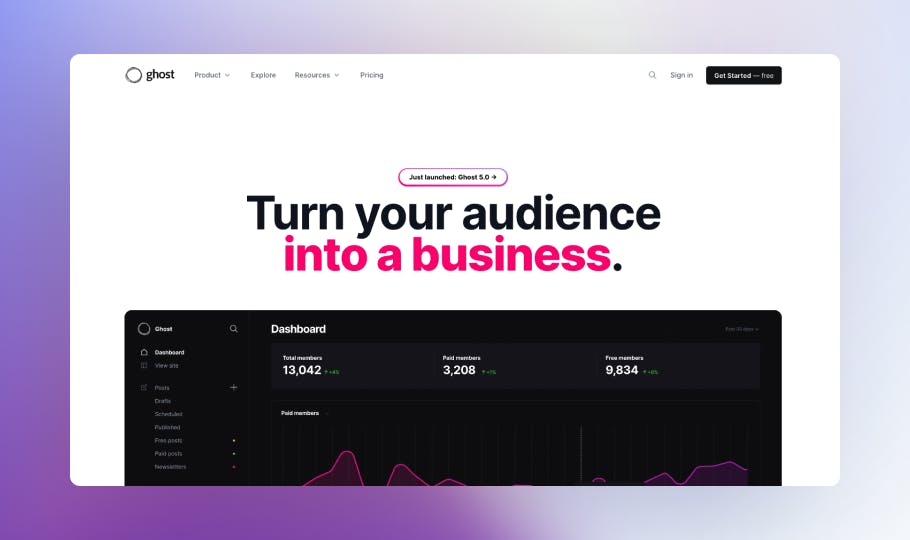
Ghost is a popular open-source headless Content Management System (CMS) that is often used with Next.js projects. It will also gained popularity as the best Next.js CMS in 2023.
Ghost was originally designed specifically for blogging, so it's tailored for managing content. It provides a clean and simple interface for authors and editors to create and manage posts, making it suitable for projects where content creation is a primary focus.
Both Ghost and Next.js emphasize performance. Ghost is designed to be fast and efficient, while Next.js provides features like server-side rendering and static site generation, which can lead to faster page load times and better SEO performance.
| Pros | Cons |
|---|---|
|
|
6. Hygraph
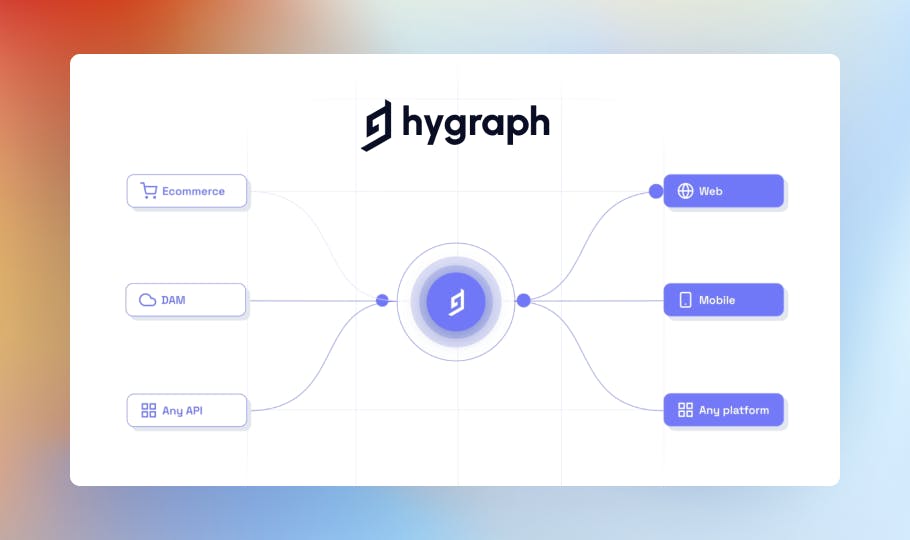
Hygraph CMS claims itself to be the ideal Headless CMS for Next.js websites and applications. The combination of Next.js and Hygraph CMS can enhance the efficiency of your PWAs, eCommerce stores, or Desktop app projects.
This CMS features an easy-to-use graphical user interface (GUI) that makes it easy to create and manage content without having to write code. Additionally, Hygraph is built on top of the GraphQL platform, making it easy to access data from any source.
Hygraph’s industry-leading GraphQL APIs, performance, security, and scalability make it a perfect choice for developers building Next.js applications in 2023.
| Pros | Cons |
|---|---|
|
|
7. CloudCannon
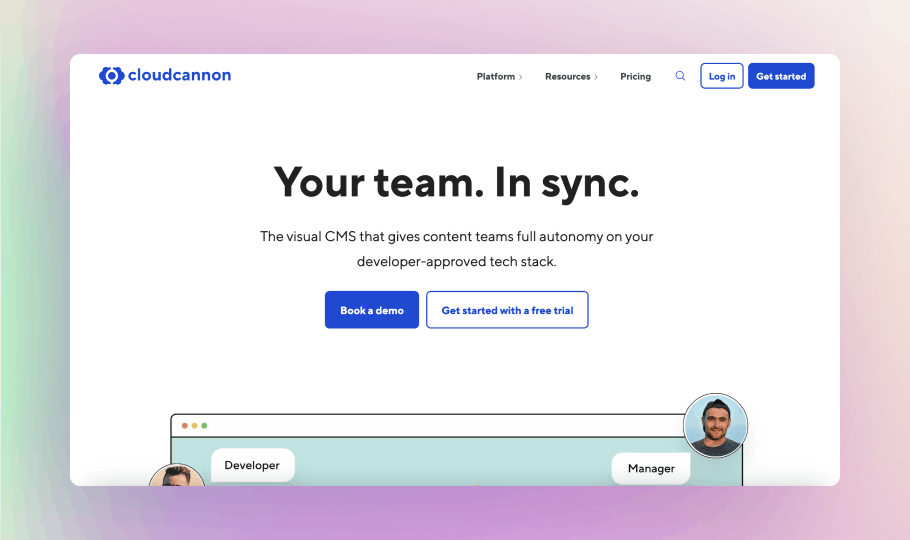
CloudCannon CMS is a versatile and user-friendly platform that bridges the gap between developers and content creators. It is designed to simplify the process of content management by providing an intuitive interface and hosting capabilities.
CloudCannon's capabilities align well with static site generators like Next.js, as it can handle the deployment of static content efficiently. Developers can create, manage, and publish content for their Next.js applications effortlessly without writing code.
| Pros | Cons |
|---|---|
|
|
8. Enonic
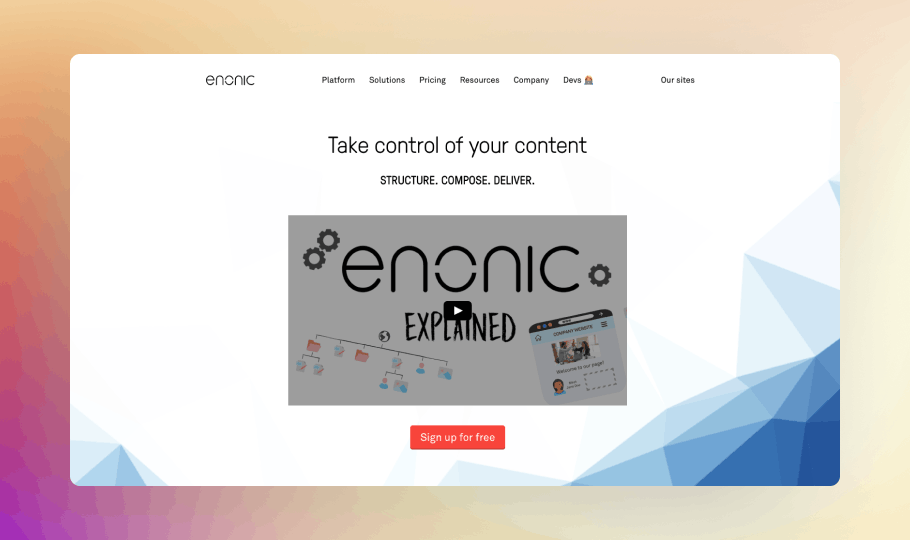
Enonic CMS is a web content management system designed to help organizations manage and deliver digital content across various platforms. This open-source, headless CMS allows developers to quickly build and manage websites and applications with Next.js. It offers tools for content creation, collaboration, publishing, and presentation.
Enonic CMS is known for its flexibility and the ability to build custom solutions on top of its framework. As a leading provider of enterprise-grade content management solutions, Enonic provides powerful tools for creating website experiences with Next.js that maximize performance and user engagement.
| Pros | Cons |
|---|---|
|
|
9. Contentful CMS
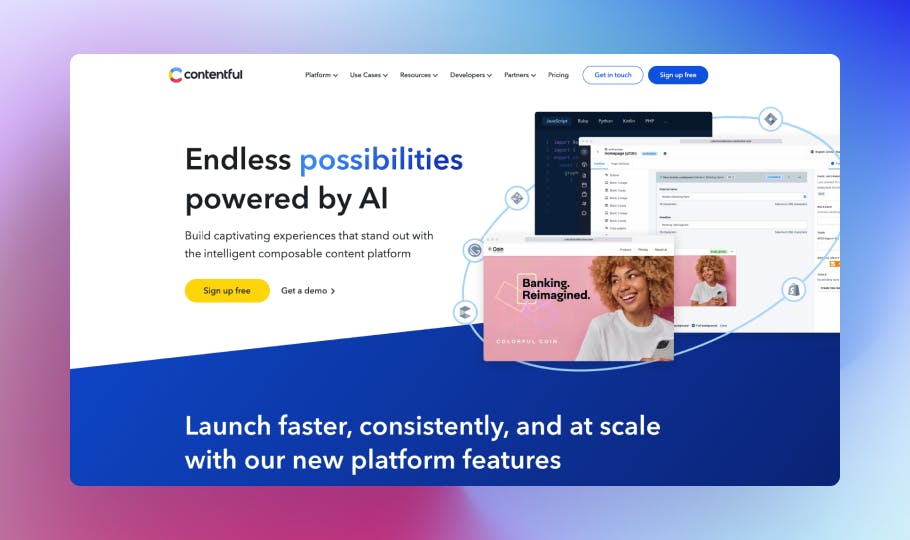
Contentful is a cloud-based, headless CMS that allows developers to build custom applications using its API. It offers a range of benefits when integrated with Next.js.
Contentful allows you to define structured content models with customizable fields, helping to ensure consistency in your content. This structure can be maintained while integrating with Next.js, ensuring that the data you fetch is consistent and well-organized.
Additionally, Contentful allows you to set up webhooks, which can trigger actions in your Next.js application whenever content changes are made. This can be used to automate processes like rebuilding static content or updating caches.
| Pros | Cons |
|---|---|
|
|
10. TinaCMS
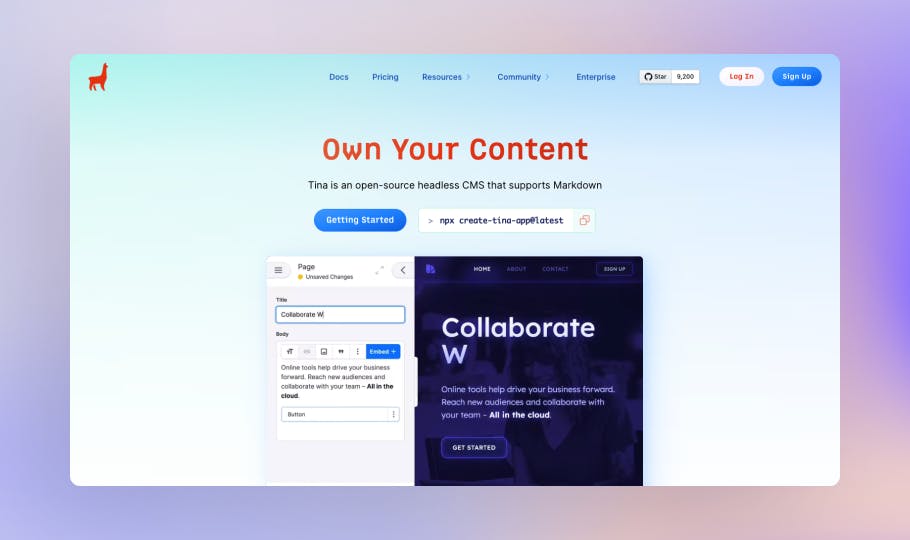
TinaCMS is a modern, open-source, headless CMS. It has gained popularity as a good choice for the Next.js project.
TinaCMS employs a Git-based approach to content management. This means that content changes are stored as Git commits, providing version control capabilities. This can be particularly useful in collaborative environments, allowing teams to track changes, roll back to previous versions, and review content updates in a structured manner.
Allowing developers to manage content from within their own apps, allowing them to update and deploy content with minimal disruption. Tina's intuitive user interface makes it easy for non-technical users to author content while still providing powerful tools to developers, such as data modeling and custom fields.
| Pros | Cons |
|---|---|
|
|
11. Webiny
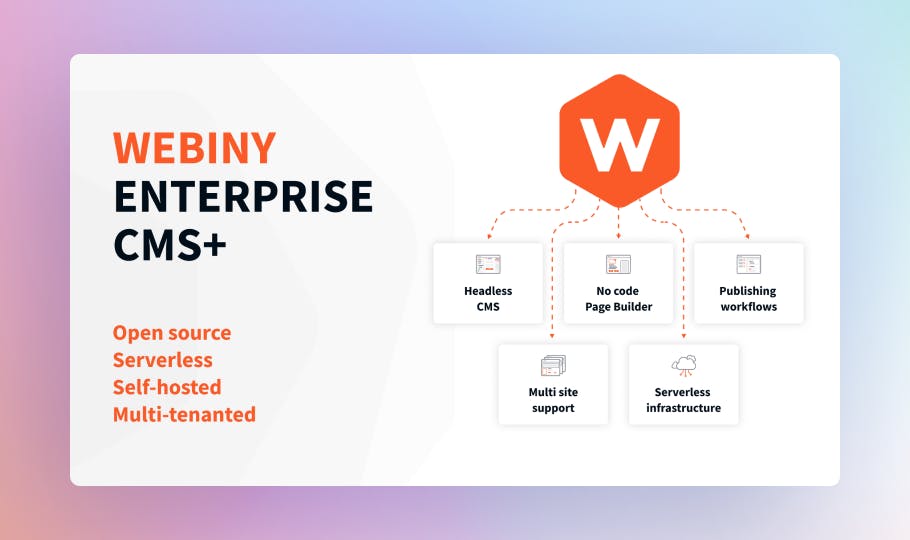
Webiny is built on top of a highly-scalable AWS serverless infrastructure. With its powerful content modeling system and intuitive user interface, For developers looking to create modern websites and applications with Next.js, Webiny CMS is a fantastic option.
The Webiny application framework provides all the necessary tools for building, architecting, and deploying serverless applications.
Webiny also has powerful integrations with popular services such as GraphQL, Amazon S3, and Stripe. Its open-source nature and extensibility make it a versatile choice for a wide range of projects and use cases.
| Pros | Cons |
|---|---|
|
|
Get a Glimpse of the Key Points
Next.js is a flexible React framework used to create web applications and perform server-side rendering. In recent years, it has emerged as one of the most popular frameworks for building modern web applications.
The best decision relies on the specifications and preferences of the project when it comes to selecting the best Next.js CMS.
You'll be blown away by the endless possibilities of using a headless CMS for your future Next.js projects:
- Sanity: Unify your business with a flexible content solution to achieve your modern architecture goals.
- Suncel: A powerful and versatile content platform.
- Prismic: Perfect for creating custom websites and applications.
- Strapi: The best CMS for large content websites.
- Ghost: Ideal for content creators seeking a simple & budget-friendly publishing solution.
- Hygraph: Ensures that you get the best of both worlds — high performance coupled with fast production times and great user-controlled experiences.
- CloudCannon: With CloudCannon as your Next.js CMS, enable easy collaboration for creating amazing static sites with React components.
- Enonic: Gives developers full flexibility with structured content and APIs, while content editors get an intuitive experience.
- Contentful: A go-to headless CMS for developers launching Next.js projects.
- Tina CMS: A git-based content management system (CMS) that enables anyone to effortlessly create a high-quality website.
- Webiny: A dynamic, content-heavy website can be built easily using the integration of Next.js + Webiny.
.
Note: Our editorial team independently picked and reviewed each of the products, frameworks, and platforms we listed. All of the mentioned product’s features and other information were collected independently and dependent on the date this article was published. We cordially request that, before making any decision, please visit the featured websites. Posts may contain affiliate links.



